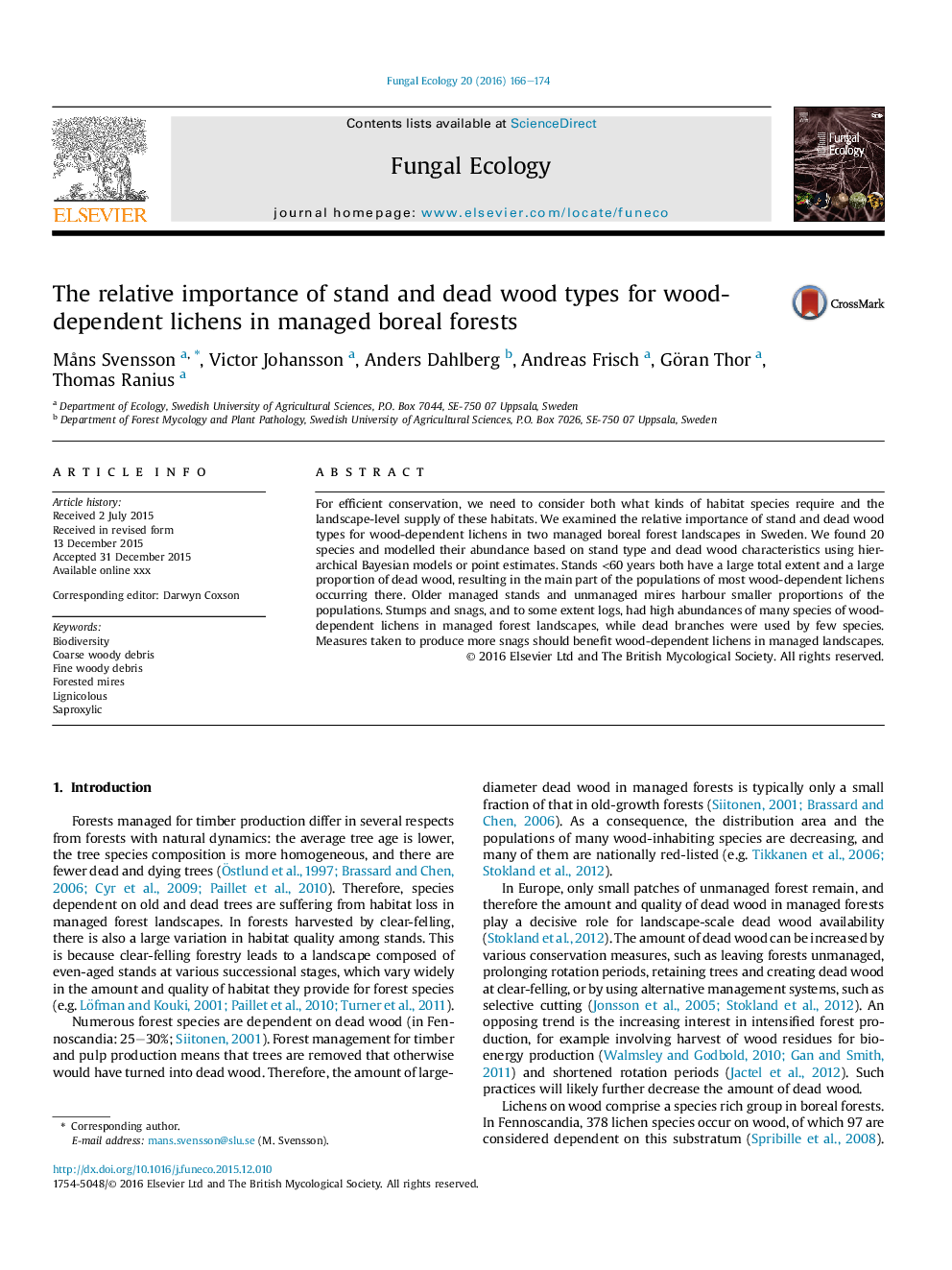| Article ID | Journal | Published Year | Pages | File Type |
|---|---|---|---|---|
| 8384486 | Fungal Ecology | 2016 | 9 Pages |
Abstract
For efficient conservation, we need to consider both what kinds of habitat species require and the landscape-level supply of these habitats. We examined the relative importance of stand and dead wood types for wood-dependent lichens in two managed boreal forest landscapes in Sweden. We found 20 species and modelled their abundance based on stand type and dead wood characteristics using hierarchical Bayesian models or point estimates. Stands <60 years both have a large total extent and a large proportion of dead wood, resulting in the main part of the populations of most wood-dependent lichens occurring there. Older managed stands and unmanaged mires harbour smaller proportions of the populations. Stumps and snags, and to some extent logs, had high abundances of many species of wood-dependent lichens in managed forest landscapes, while dead branches were used by few species. Measures taken to produce more snags should benefit wood-dependent lichens in managed landscapes.
Related Topics
Life Sciences
Agricultural and Biological Sciences
Ecology, Evolution, Behavior and Systematics
Authors
MÃ¥ns Svensson, Victor Johansson, Anders Dahlberg, Andreas Frisch, Göran Thor, Thomas Ranius,
